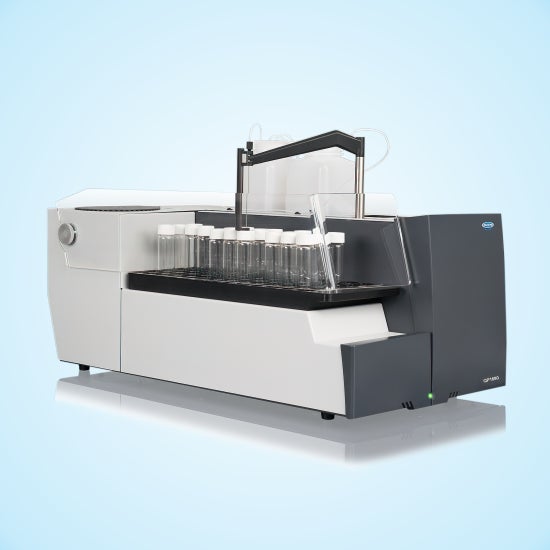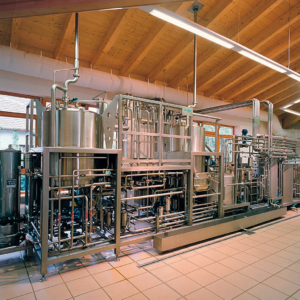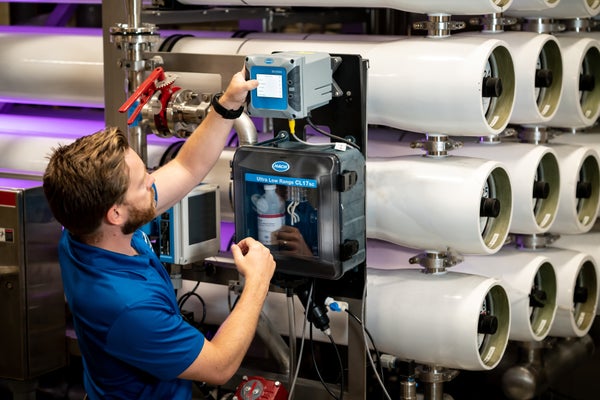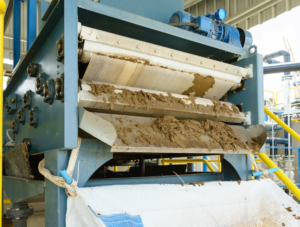Dissolved Oxygen Measurement in Ultrapure Water for Semiconductor Manufacturing
- Measures in the sub-1 ppb range for today’s demanding analysis requirements, for trace level accuracy
- Enables elimination of film buildup during manufacturing
- Compatible with all common deaeration methods described below
- Menu-driven instrument control and displays for easy setup and operation
Application Description
Semiconductor manufacturing is commonly thought to comprise two basic components, the “wet process” and “packing process.” Since the inception of large-scale integration techniques, the presence of dissolved oxygen in ultrapure water during the wet process has been a growing concern.
Prior to the 1990s, dissolved oxygen (DO2) levels as high as 100 parts per billion were commonly accepted. This was considered adequate to suppress microorganism growth. More recently, a sub-1 ppb DO2 level has been sought, to prevent the formation of oxide film that would otherwise appear on the surface of silicon wafers.
This oxide film is detrimental to submicron or deep submicron circuitry for several reasons, including epitaxial growth on high quality silicon film at lower temperatures or in the quality of thin gate oxide film. In addition, the film increases contact resistance between silicon and metal leads. Unfortunately, the oxide film can be formed in air, in ultrapure water, and in chemicals. In the case of ultrapure water, the lower the DO2 level, the slower the formation of film oxide. This can be explained by the reaction of H-radicals on the interfacial molecular structure of silicon wafers, which is oxidized by DO2 and water.
Of the three current methods of deaeration, using a hollow fiber membrane under negative pressure is perhaps most widely used, where oxygen is extracted from water through a membrane. While this is cost effective and compact, it is not generally capable of achieving satisfactorily low DO2 levels. It is generally used as a primary method and combined with one of the following two.
The reduction method recombines DO2 with hydrogen introduced to the line under the presence of a palladium catalyst or ultraviolet light. This can produce very low DO2 levels, but it becomes necessary to monitor H2 levels to keep stoichiometrical volume for O2.
Nitrogen gas bubbling (sparging) usually connects three or four columns in series where N2 is introduced at the bottom and water flows to the top. Very high levels of very pure N2 are required, but theoretically, DO2 levels of less than 0.1 ppb are possible.
In normal manufacturing, levels of 3–6 ppb are sought, although it is reported that a miniature plant in Dr. Ohomi’s laboratory at Tohoku University managed a 0.4 ppb level. Orbisphere’s electrochemical sensors, as used with the current 3600 series analyzers, were used to measure DO2 levels at both the inlet and outlet ports for the N2 sparging method described above, with the more useful information derived at the latter end.
Installation Recommendations
It is recommended that the DO2 sensor be installed in a flow chamber on a side stream. Ultrapure water is run past the sensor and routed to waste. This method is preferred to placing the sensor directly in-line, to assure that no chemical impurities will be introduced into the sample by the sensor itself. The flow requirement is only 180 ml/minute.
Depending upon the method of de oxygenation, users should be wary of high levels of dissolved gases that have the potential to require higher levels of maintenance. For example, N2 sparging could cause high levels of nitrogen in the wash water, which could degas in the side stream sample line. To guard against this, a flow control valve on the outlet of the flow chamber is recommended, and a membrane protection grill would be advised.
Recommended System Components
| Description | Model |
|---|---|
| Orbisphere 510 Controller O2 (EC), Panel Mount, 100–240 VAC, 0/4–20 mA, External Pressure Sensor Connection | 510A00/P1C0P000 |
| Orbisphere GA2400 Stainless Steel Oxygen Sensor (EC), 40 bar, EPDM O-rings | GA2400-S00 |
| 3 meter sensor cable for all thermal conductivity and electrochemical sensors, supplied with two connectors; 10 wires, black sleeve | 32505.03 |
| Flow chamber, stainless steel, with ¼” Swagelok inlet/outlet tube fittings (6-mm available) | 32001.011 |
Additional Resources

Online Chlorine Monitoring
go to HACH.COMWater InsightsAccurate chlorine monitoring is essential for regulatory compliance and process control in municipal and industrial applications. Choosing the right analyzer can help reduce chemical costs, minimize downtime, and ensure consistent water...

Determination of TOC (0-1000 ppm) and TNb (0-100 ppm) in Municipal Wastewater According to EN 1484, USEPA 415.1 and 9060A
go to HACH.COMWater Insights TOC is a valuable sum parameter in municipal wastewater (WW) monitoring. It can be used as a more cost-effective and non-toxic surrogate for COD analysis for process control which also avoids production of toxic waste. TOC is also suitable...

Improving Taste and Odor Issues with TOC Monitoring
go to HACH.COMWater InsightsProblem Customers of the Desoto Parish Water Works drinking water facility complained about taste and odor issues in finished water. Organic matter, like bacteria and algae, can be a key contributor to taste and odor in drinking water....
Privacy Policy | Cookie Policy | Cookie Settings | Do Not Sell or Share My Data
©Hach All rights reserved.




